|
Why does North Livermore Valley deserve our
extraordinary efforts to protect it from develpment?
No single chunk of the earth in these parts carries a more storied and contentious history than North Livermore Valley. Controversy over the fate of the valley's rolling hills and verdant scenic ranchlands has fueled passion 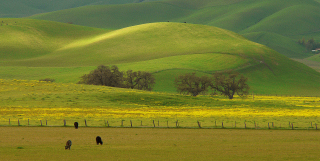 in corporate board rooms and local government chambers since the middle of last century. Yet to the average Livermore resident, North Livermore Valley is more theoretical than real. Few have reason to go there, and the only passers-through are a daily parade of impatient cut-through commuters in a hurry to go somewhere else. The valley is so geographically partitioned from Livermore proper, in spite of being just a stone’s throw north of the freeway, that it suffers from near total invisibility. Unless you know it’s there, it does little to make itself known. Why, then, do we care? in corporate board rooms and local government chambers since the middle of last century. Yet to the average Livermore resident, North Livermore Valley is more theoretical than real. Few have reason to go there, and the only passers-through are a daily parade of impatient cut-through commuters in a hurry to go somewhere else. The valley is so geographically partitioned from Livermore proper, in spite of being just a stone’s throw north of the freeway, that it suffers from near total invisibility. Unless you know it’s there, it does little to make itself known. Why, then, do we care?
We care because North Livermore Valley has the potential to wield powerful leverage over our city and over our lives as Livermore residents. What gives the valley this potency is the sheer size of its flat,  easily-developed floor, its proximity to Livermore’s urban infrastructure, and the resulting probability that even a small, unthreatening genesis of housing development would grow inexorably over time to buildout, nearly doubling the population of Livermore. Our attention is commanded by the prospect of a Livermore nearly doubled in size, the resultant blight from a morass of traffic and an over-burdened city infrastructure, the loss of our small-town way of life, and the irreversable destruction of an as-yet miraculously unspoiled scenic gemstone in our own backyard. easily-developed floor, its proximity to Livermore’s urban infrastructure, and the resulting probability that even a small, unthreatening genesis of housing development would grow inexorably over time to buildout, nearly doubling the population of Livermore. Our attention is commanded by the prospect of a Livermore nearly doubled in size, the resultant blight from a morass of traffic and an over-burdened city infrastructure, the loss of our small-town way of life, and the irreversable destruction of an as-yet miraculously unspoiled scenic gemstone in our own backyard.
 The bulk of the developable land in the valley is in the hands of land speculator/developers on a hair trigger to build. These developers long ago tipped their hand regarding North Livermore Valley -- we know exactly what they hold and what they intend to do with it if given the chance. Their goal, demonstrated by decades of legal and electoral wrangling at both city and county levels, is total buildout, resulting in as many as 20,000 housing units and 60,000 population by the time it finally runs its course. And who can blame them for trying? Most calculators don’t even have enough zeros to display the expected bottom line gross return, which is in the tens of billions of dollars. And every increase of $1000 in the median home price means another potential twenty million dollars net profit. Such is the enormity of the financial pressure behind housing development in North Livermore Valley, and it only increases with time. The bulk of the developable land in the valley is in the hands of land speculator/developers on a hair trigger to build. These developers long ago tipped their hand regarding North Livermore Valley -- we know exactly what they hold and what they intend to do with it if given the chance. Their goal, demonstrated by decades of legal and electoral wrangling at both city and county levels, is total buildout, resulting in as many as 20,000 housing units and 60,000 population by the time it finally runs its course. And who can blame them for trying? Most calculators don’t even have enough zeros to display the expected bottom line gross return, which is in the tens of billions of dollars. And every increase of $1000 in the median home price means another potential twenty million dollars net profit. Such is the enormity of the financial pressure behind housing development in North Livermore Valley, and it only increases with time.
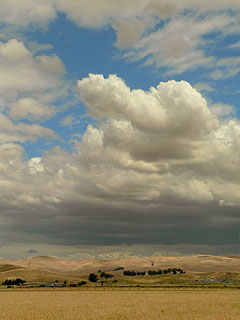 Attempts to develop North Livermore Valley from the 1960’s through the end of the century were anything but subtle. Developers proposed massive urbanization projects that would have paved over the entire valley floor in a single blow. Local elected officials and the city and county electorate repeatedly recoiled at the huge scale of these projects and wisely said no. But in 2005, developers took a new approach. Obviously the locals didn’t like the idea of large-scale development in their pet valley, so one developer put together a proposal for a smaller, "starter" development and tried to slide it past Livermore voters, who must give their approval to any housing development outside the currently prescribed "Urban Growth Boundary." Again, Livermore said no, but this new approach lent a serious new twist to the ongoing developer vs. community battle. Could the "camel’s-nose-under-the-tent" approach eventually succeed where a full frontal assault had historically failed? Could developers convince the electorate that just one small housing tract wouldn’t be all that bad, thence to nickel-and-dime that deluded electorate with a succession of individually "palatable" projects until finally they attained what they had wanted in the first place? Attempts to develop North Livermore Valley from the 1960’s through the end of the century were anything but subtle. Developers proposed massive urbanization projects that would have paved over the entire valley floor in a single blow. Local elected officials and the city and county electorate repeatedly recoiled at the huge scale of these projects and wisely said no. But in 2005, developers took a new approach. Obviously the locals didn’t like the idea of large-scale development in their pet valley, so one developer put together a proposal for a smaller, "starter" development and tried to slide it past Livermore voters, who must give their approval to any housing development outside the currently prescribed "Urban Growth Boundary." Again, Livermore said no, but this new approach lent a serious new twist to the ongoing developer vs. community battle. Could the "camel’s-nose-under-the-tent" approach eventually succeed where a full frontal assault had historically failed? Could developers convince the electorate that just one small housing tract wouldn’t be all that bad, thence to nickel-and-dime that deluded electorate with a succession of individually "palatable" projects until finally they attained what they had wanted in the first place?
The real danger is that against an unorganized electorate lacking a motivated vision for North Livermore Valley, this tactic could very well work. The lack of a definitive, community-backed alternate plan for the valley is a vacuum that developers are poised to fill with houses. The difficulty for citizen opposition against a "nickel-and-dime" tactic spread out over a period of years or decades would be in identifying and quantifying the undesireable effects of a succession of small developments, and then repeatedly making the right decision over the years, all in an environment of heated political debate skewed by manufactured misinformation and aggressive campaign tactics from developers.
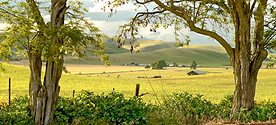 It’s easy to characterize the downside to instant mega-scale development in North Livermore Valley. Nearly everyone agrees that the sudden injection of twenty thousand houses with sixty thousand people would have a pronounced and measurable negative impact on city services, schools, local and regional traffic and air pollution, and would change forever Livermore’s highly valued small-town character and way of life. But would a thousand houses hurt, or their effect even be detectable? Who knows. Two thousand? Maybe, maybe not. Four thousand? Do we even know exactly what we’re afraid of? How do we detect and judge the effects? If we were to fall into a pattern of repeatedly acquiescing to an onslaught of smaller housing projects, how would we know when we’ve let it go too far -- when we’ve exceeded the city’s optimal population, when we’ve opened wide the door to the inrush of big-city problems, or when our actions (or inactions) have finally resulted in the irrevocable spoiling of the valley for any future vision that we as Livermore citizens might hold for it? At what point does increasing traffic or school crowding become unbearable? And would the first, or the second, or the third "small" development produce an unstoppable momentum for the developers, against which resistance is eventually futile? The variables and unknowns defy any presumption of answers. It’s easy to characterize the downside to instant mega-scale development in North Livermore Valley. Nearly everyone agrees that the sudden injection of twenty thousand houses with sixty thousand people would have a pronounced and measurable negative impact on city services, schools, local and regional traffic and air pollution, and would change forever Livermore’s highly valued small-town character and way of life. But would a thousand houses hurt, or their effect even be detectable? Who knows. Two thousand? Maybe, maybe not. Four thousand? Do we even know exactly what we’re afraid of? How do we detect and judge the effects? If we were to fall into a pattern of repeatedly acquiescing to an onslaught of smaller housing projects, how would we know when we’ve let it go too far -- when we’ve exceeded the city’s optimal population, when we’ve opened wide the door to the inrush of big-city problems, or when our actions (or inactions) have finally resulted in the irrevocable spoiling of the valley for any future vision that we as Livermore citizens might hold for it? At what point does increasing traffic or school crowding become unbearable? And would the first, or the second, or the third "small" development produce an unstoppable momentum for the developers, against which resistance is eventually futile? The variables and unknowns defy any presumption of answers.
The only safe solution for now is to adopt a policy of zero tolerance for any development, to give us time to formulate and implement our own plan for the valley. Our best defense against losing North Livermore Valley to housing development is a strong offense in the form of a fully formulated non-housing alternative. Until that plan assumes its place as Livermore’s vision, we are extremely vulnerable, and we must take the zero-tolerance hard line on housing development. Our mightiest leverage exists before the very first house is built. Whatever protection mechanism fails to stop that first house will be exploited again and again until there is nothing left to preserve. One need only look as far as Livermore’s neighboring communities for proof.
What are the possibilities for non-housing land use in North Livermore Valley? Ideas abound. Here are some reasonable criteria to help separate the good from the bad. A desirable and acceptable development project for North Livermore valley (1) is not houses or any form of sub-divided residential development, (2) is not urban industry or non-agricultural related business, (3) benefits the people of Livermore, (4) does not burden local infrastructure or city services, (5) does not add to local traffic or pollution, nor does it have any involvement with I-580 peak-hour traffic, and (6) is in harmony with the ecological, scenic, and rural agricultural character of the land. Far from being an unrealistic or untenable set of restrictions, these criteria can accommodate such diverse projects and activities as (1) vineyards, estate wineries, bed-and-breakfasts and restaurants in support of Livermore’s "Wine Country," (2) other irrigation-based agriculture, (3) regional parks, scenic hiking, country cemeteries, and protected, undisturbed open areas for ecological preservation, and (4) outdoor recreational and community sports facilities. The potential is great for a world-class model of non-residential, ecologically responsible land use and its subsequent scenic, recreational and economic windfall for Livermore. It would be to the shame of any and all  who hold any power of influence, be it even a single vote, to allow such potential to be squandered by permitting North Livermore Valley merely to be paved over with houses. who hold any power of influence, be it even a single vote, to allow such potential to be squandered by permitting North Livermore Valley merely to be paved over with houses.
How do we turn a vision for North Livermore Valley into a reality? First, ground-level planning sets the stage. City leaders and planners today must create an enabling business environment, infrastructure, and community mindset for the cultivation of the vision by addressing the issues of business models, municipal and agricultural water, sewage, and ground transportation. Conservancy and regional park organizations must be enlisted to assist in establishing permanently protected, publicly accessible open areas as well as areas set aside for sensitive animal and plant populations. And finally, there must ultimately be a Vision for what actually to put into the valley, a vision that must arise from the collective creativity of the community itself. Although there is no one authority that can compel land owners, civic leaders, voters, and the business community to march in unison toward any concept or plan, the very existence of a strong plan backed by clear community vision is essential to consistently identify over the years which decisions and actions contribute to the goal, pull against it, or have the potential to ruin it altogether.
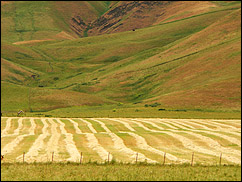 Of equal importance, we must ensure that a vision formulated today continues into the future. When this current generation finally looses its energy and influence, we can be certain that housing developers will still be there waiting for the moment when the vision and the will to pursue it fade. Developers will be ready to exploit creeping apathy, population turnover, and lack of long term community memory. We can formulate a vision; it is our children who will be in the position either to bring the vision to pass or allow it to wither. It is toward our young people that we should be directing an effort to raise awareness, foster concern, and inspire activism. Consider the fact that most of today’s voters were in grade school when battles over the fate of North Livermore Valley first began in the 1960’s. With an eye toward the inevitable passing of generations, we must install our vision for the preservation of Livermore's open spaces into that segment of Livermore’s corporate memory where it holds the promise of continuation. Of equal importance, we must ensure that a vision formulated today continues into the future. When this current generation finally looses its energy and influence, we can be certain that housing developers will still be there waiting for the moment when the vision and the will to pursue it fade. Developers will be ready to exploit creeping apathy, population turnover, and lack of long term community memory. We can formulate a vision; it is our children who will be in the position either to bring the vision to pass or allow it to wither. It is toward our young people that we should be directing an effort to raise awareness, foster concern, and inspire activism. Consider the fact that most of today’s voters were in grade school when battles over the fate of North Livermore Valley first began in the 1960’s. With an eye toward the inevitable passing of generations, we must install our vision for the preservation of Livermore's open spaces into that segment of Livermore’s corporate memory where it holds the promise of continuation.
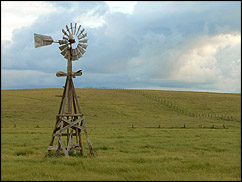 As today’s community activists and lovers of our home town, we will have succeeded in our efforts if our actions result not only in the preservation of Livermore as we now cherish it, but also in the hope that our children will value our vision as much as we do, will make it their own, and will carry it with them into the city that this generation had the forsight to preserve for them, the Livermore of tomorrow. As today’s community activists and lovers of our home town, we will have succeeded in our efforts if our actions result not only in the preservation of Livermore as we now cherish it, but also in the hope that our children will value our vision as much as we do, will make it their own, and will carry it with them into the city that this generation had the forsight to preserve for them, the Livermore of tomorrow.
|